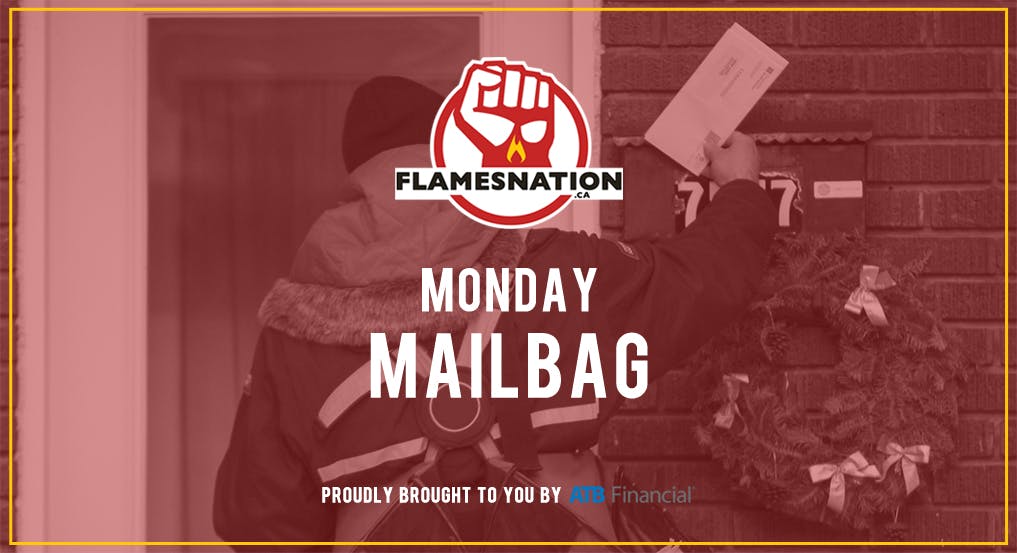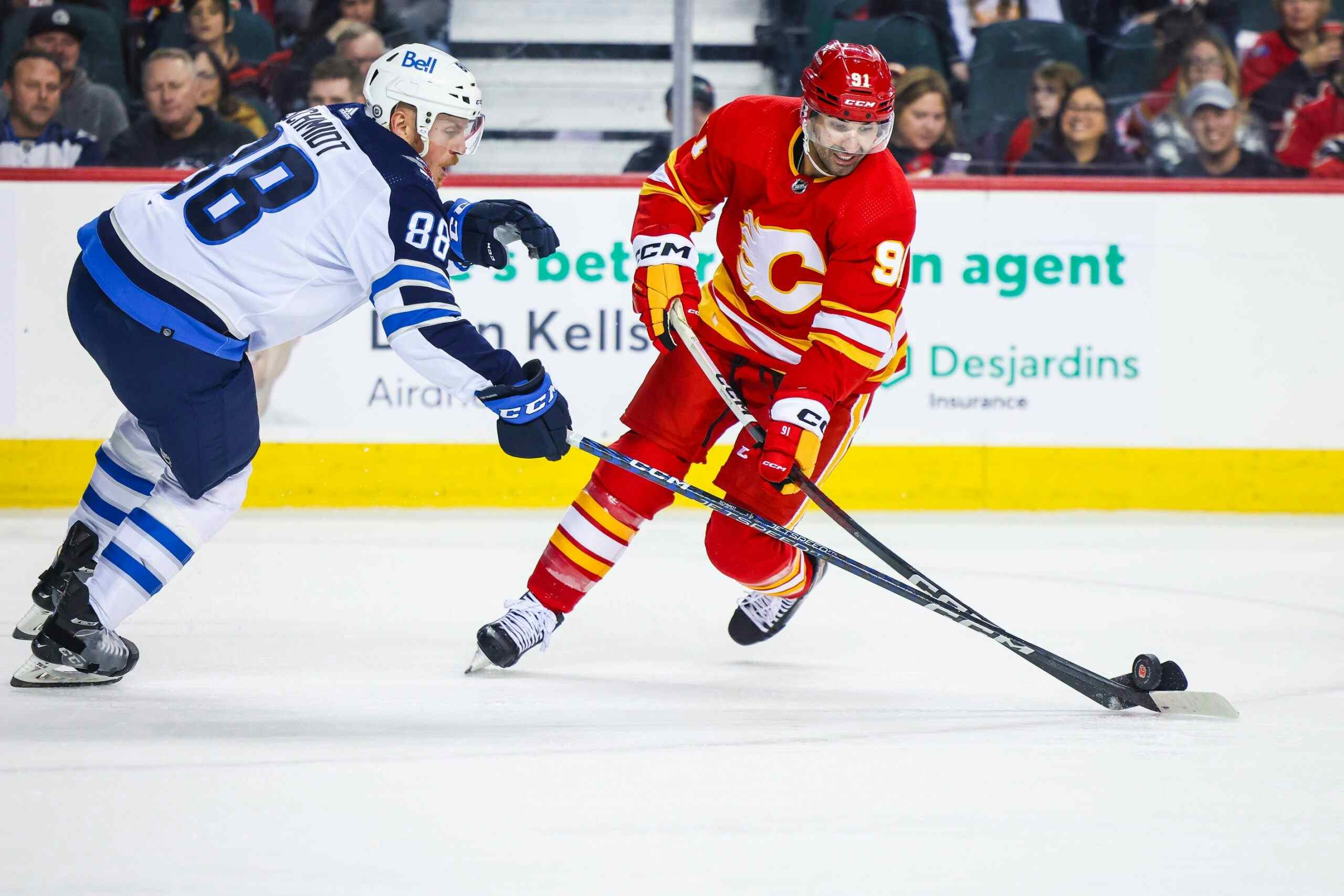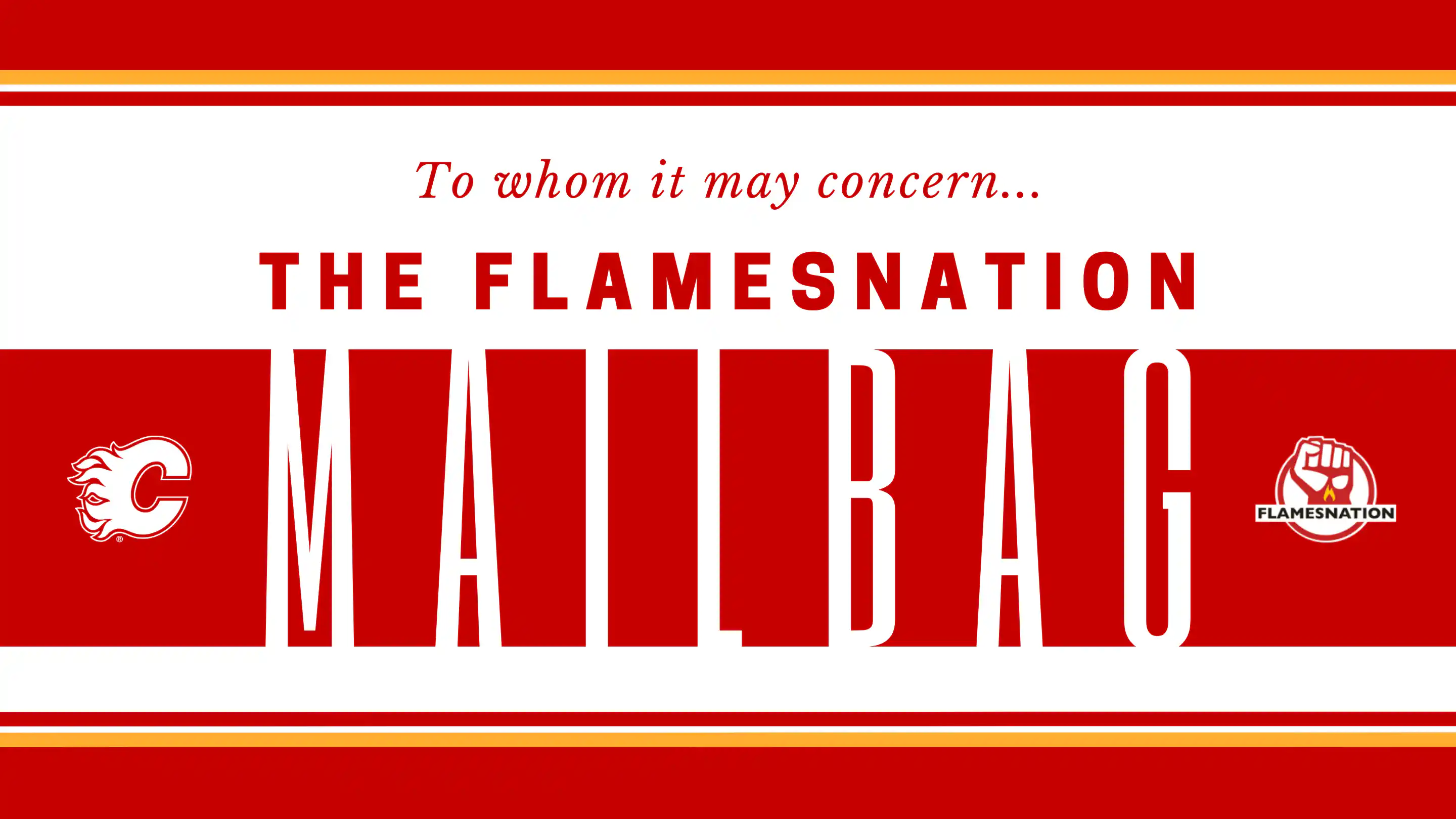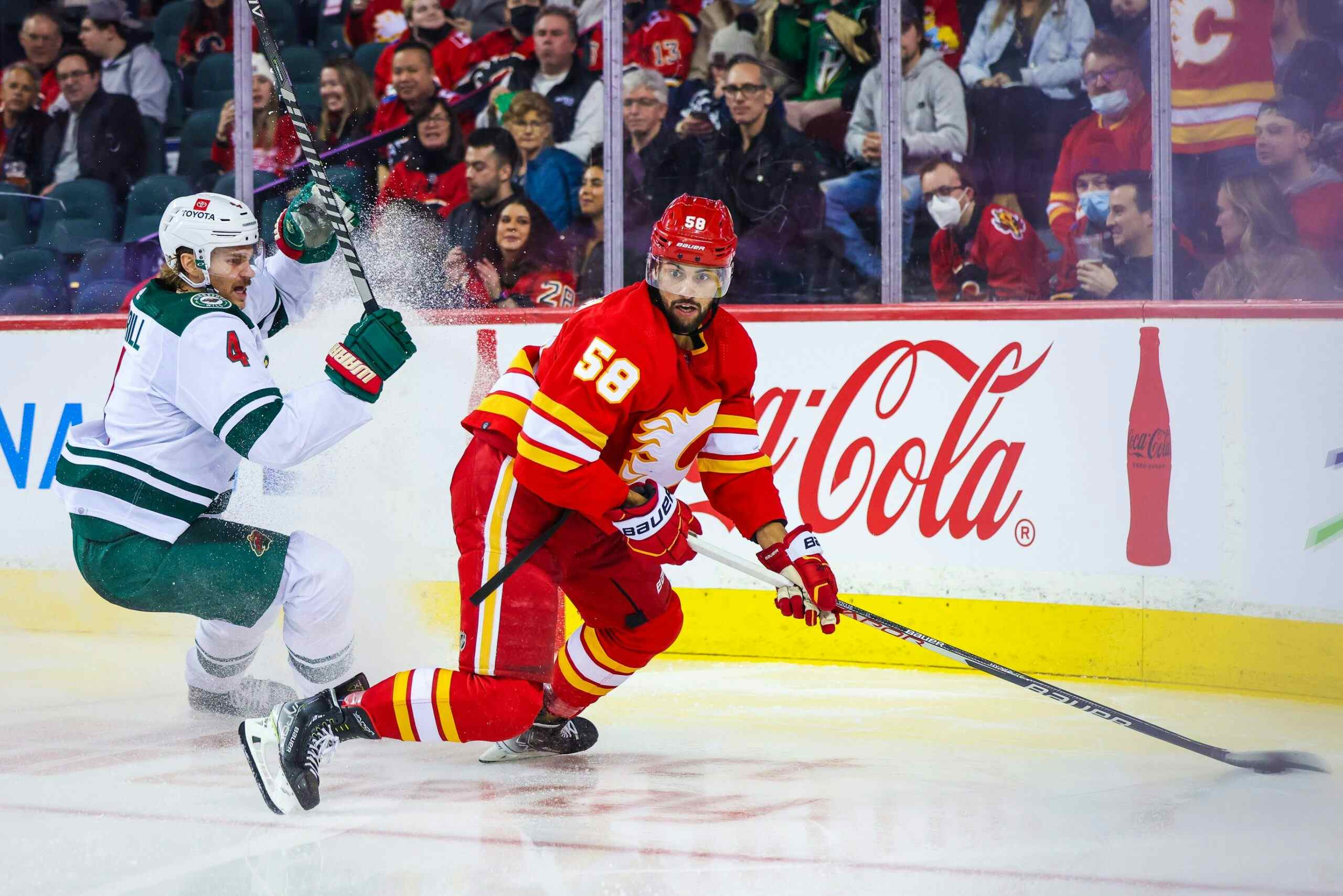FN Mailbag – May 1, 2017

By Kent Wilson
6 years ago
It’s May, it’s the middle of spring, and the Flames season is over. It’s time, once again, to turn to the organization’s now annual question: “what will Calgary do with their goaltending?”
Since Miikka Kiprusoff retired (and honestly, since before that since he started to wobble near the end), the Calgary crease has been a perpetual question mark. Brian Elliott and Chad Johnson were good gambles to help put this matter to rest, but neither managed to cement himself as a solid #1 moving forward.
Some may see having to pursue puck stoppers again this summer as a mark against Treliving, but this is a good offseason to be looking for a goaltender, so the flexibility is a boon. The upcoming expansion draft is going to create a goalie supply glut on the trade market, positioning the Flames to acquire a quality netminder for pennies on the dollar.
The absence of a goalie is definitely anxiety provoking for management and fans alike. Unfortunately, the only thing worse than not having a quality, proven netminder is having a bad contract cemented in the net for too long. The hope is Treliving can finally land the former while avoiding the latter this year.
Assuming, of course, that Treliving is still around…
The apparent standoff between Treliving and the Flames ownership is very odd. Even Elliotte Friedman commenting on the FAN960 recently noted that the Flames’ current situation with their GM is very atypical.
Originally we assumed it was reluctance on the part of the organization to re-ink the GM, but it’s starting to feel like there is resistance on both sides. It is remarkably rare for people to walk away from GM positions given how coveted and rare they are. If Treliving decides to move on from Calgary it should result in deep concern on the part of Flames fans, because it suggests the front office is uniquely dysfunctional.
For now, we can only wait to see what happens.
That would be ownership, likely represented by Ken King. Brian Burke is the President of Hockey ops, but I don’t think this contract decision would flow through him.
I mostly like what Treliving has done so far and in his interviews, he sounds measured, intelligent and capable of learning on the job. I certainly haven’t liked all of his moves, but I haven’t seen an NHL GM bat 1.000 yet. On the whole, I think his good bets have outweighed the bad so far.
I also think it would be a bad time for the organization to switch visions. The Flames took a solid step forward this season and seem to be a team on the upswing. With a young core mostly in place and a new bench crew seemingly in control, installing a completely new voice at the top of the ladder would potentially be disruptive and counter-productive.
Developing goaltenders is unfortunately really, really difficult because of the nature of the position. As a rule, coaches don’t tend to trust young players and rookies, and the goalie is the one guy on the roster who can singlehandedly sink the whole team. A coach can shelter a skater from tough match-ups, hide them lower down the rotation, and pair them with wily vets to assuage their rookie mistakes.
None of that is true in goal. When a guy is in net, he’s out there more or less alone, facing the best the other team has to offer all night.
So you can see why developing a young puck-stopper in the show is mostly frowned upon.
The two main paths to the NHL for goalies seem to be:
- Be a top 10 pick/generational talent in whom the team has a lot of faith.
- Be thrust into a starting position due to circumstances (like injuries) and flourish immediately, eliminating doubt.
All that said, the Flames may be forced to develop one of their goalie prospects in the show this year. With Jon Gillies, David Rittich (if he is re-signed), Mason McDonald, Nick Schneider, Tom McCollum, and Tyler Parsons all in the fold, the club should probably try at least one of Gillies or Rittich as a backup in 2017-18.
Shopping for another top six winger becomes a lot more palatable if the Flames can lose Brouwer’s contract.
Finding one is another problem altogether. The UFA winger pool this year is fairly shallow, with the top names being Alexander Radulov and T.J. Oshie. Thomas Vanek, Patrick Marleau, Patrick Eaves, Radim Vrbata, Justin Williams, Patrick Sharp, P.A. Parenteau, and Chris Kunitz are also available in the “rapidly aging/over 34 years old” bin.
So it may not be possible to land a true blue top six winger this year. That said, cap flexibility is never a bad thing.
I don’t think any prospect in the system right now is likely to be high impact as early as next year. Which isn’t necessarily an indictment of the guys mentioned – just that rookies, outside of the elite players, don’t tend to have much impact in the first season. Usually, it’s just about finding their legs and keeping their head above water.
Mark Jankowski should make a push to be on the team next year, but he’ll likely be stuck in mostly a fourth line role unless the team decides to bump Sam Bennett to the wing.
Perhaps the best thing that could happen for the team is one of their young defenders pulls a T.J. Brodie, and leaps more or less fully formed as a useful defender up to the parent roster. Having a Rasmus Andersson, Brett Kulak or Oliver Kylington step in and provide quality minutes for cheap would help Calgary’s top-heavy blueline immensely.
It will depend on multiple factors. As mentioned, maybe Bennett swings back to wing, or maybe they lose a guy like Bouma, Chiasson, or Brouwer and decide to shift Stajan to the wing in order to make room.
Of course, the biggest determinant will be Jankowski himself. The org likes him, so if he can make a solid case to be on the roster, then they’ll likely do whatever it takes to make room for him at some point.
Haha, a gambling man I see.
If Gillies had had a better season in the AHL, I’d be more inclined to at least consider this move. Unfortunately, Gillie’s season was mediocre, a year after coming off of major surgery no less. That’s a very big IF to stick in the crease and bet the fortunes of your now rather expensive collection of skaters on.
This is an intriguing suggestion. If the Flames could move Brouwer to Pittsburgh for Marc-Andre Fleury, it would technically defray the latter’s relatively large contract. Fleury is scheduled to make $5.75M per season over the next two years while Brouwer is owed $4.50M over the same period. A swap of the two nets the Flames +$1.25M.
The challenge here is: Calgary would likely have to make this trade prior to the expansion draft, given that is the deadline for the Penguins to move Fleury and save one of their goalies from being plucked for nothing.
However, there is also a non-trivial chance Brouwer could be picked by Vegas, saving Calgary from his contract. So in trading Brouwer for Fleury beforehand, you risk missing playing this get out of jail free card.
Alex Novet of Hockey Graphs recently did an article on this very topic. The discussion was on whether having a top-heavy cap structure (lots of money going to a few proven superstars) or spreading the wealth (spending on depth) was preferable. His conclusion:
Hockey is a strong link game. Getting the very best players is essential to success. Phrased this way, it sounds obvious. But the above shows that this is the case even at the cost of creating weaknesses elsewhere in the lineup.…In free agency, it is better to spend cap space on a single star than on multiple pieces of the bench.
In short: teams should pay for their stars and high impact players and avoid the trap of collecting relatively pricey depth or supporting players. On the Flames, you can see this error manifest at the bottom end of the roster in Troy Brouwer, Lance Bouma, Deryk Engelland, and Matt Stajan (sorry Staj… you’re a quality depth guy, but you’re overpaid). Instead, paying replacement level or near-replacement level guys $1M or less means you can go out and land true difference makers – who are rare and do more to help you win games.
That said, this isn’t an argument to merely spend a lot of money. Every summer, NHL GMs go whale hunting and land themselves giant, boat anchor contracts that will hamper their cap budget for years afterward. So: pay your impact guys and stars, but be sure they really are impact players and stars. Fill in the gaps around them as efficiently as possible.
CELEBRATE HOCKEY WITH ATB FINANCIAL
At ATB, we hear you: being a hockey fan is expensive. We want to make it cheaper for you. Tell us how you and your squad celebrate hockey and you could win $1,000! Learn more at ATB.com/yycfans
Recent articles from Kent Wilson





